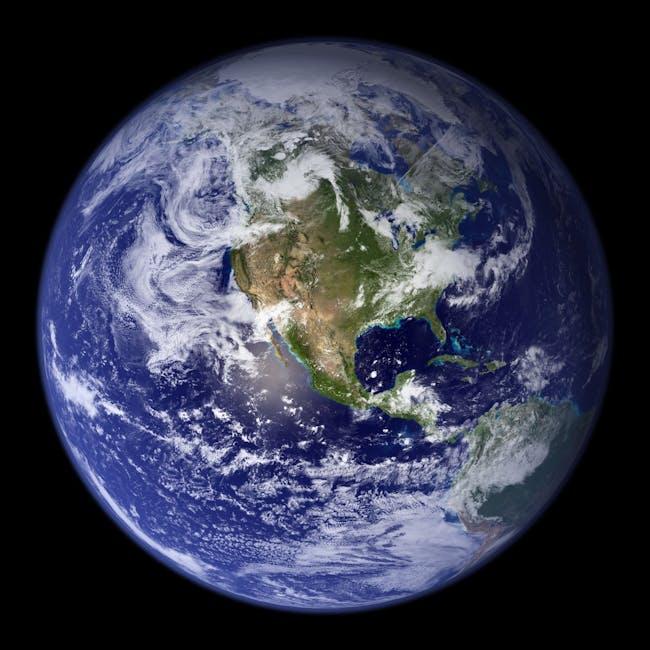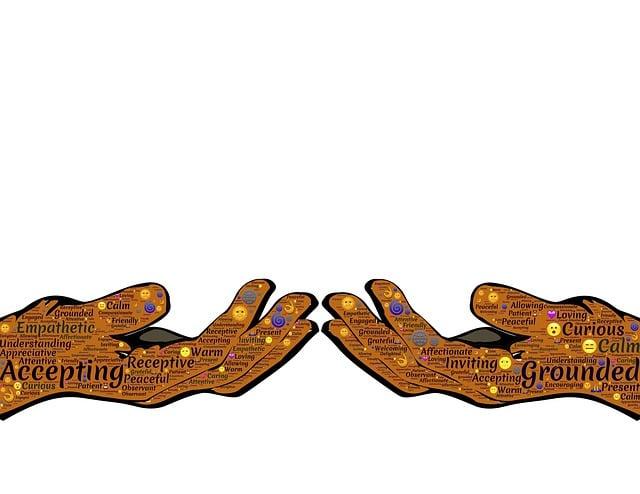Table of Contents
- Exploring the Foundations of the Gaia Hypothesis and Its Impact on Environmental Thought
- The Role of the Gaia Hypothesis in Shaping Modern Ecology
- Integrating Gaia Principles into Sustainable Practices
- Advocating for a Holistic Approach to Environmental Activism
- Cultivating Global Awareness: The Future of the Gaia Movement
- Q&A
- Insights and Conclusions

Exploring the Foundations of the Gaia Hypothesis and Its Impact on Environmental Thought
The Gaia Hypothesis, proposed by scientist James Lovelock in the 1970s, suggests that the Earth functions as a self-regulating system, where biological and inorganic components interact in a complex web of relationships. At its core, this concept emphasizes the interconnectedness of all forms of life and their surrounding environment. By viewing the planet as a living organism, the Gaia Hypothesis has fundamentally shifted how we perceive ecological systems, prompting a collective reevaluation of our role within this intricate tapestry. It encourages a perspective that recognizes the delicate balances of life and asserts the need for harmony between humanity and nature.
One of the most significant impacts of the Gaia Hypothesis has been its influence on environmental movements across the globe. By framing Earth’s biosphere as a cohesive and dynamic entity, this theory has inspired activists and scholars alike to pursue sustainability and biocentrism. This shift in thought has led to various initiatives, including:
- Conservation Programs: Protecting endangered species and their habitats.
- Eco-centric Policies: Advocating for legislation that prioritizes environmental health.
- Holistic Education: Empowering communities with knowledge about ecological interdependence.
Moreover, the Gaia Hypothesis has fostered ongoing dialogue in various academic and activist circles, bridging disciplines like ecology, philosophy, and ethics. It highlights the importance of cooperation among all Earth’s inhabitants, raising consciousness about the consequences of human actions on global ecosystems. As environmental challenges continue to mount, the foundational ideas rooted in the Gaia Hypothesis remain relevant, illustrating that nurturing the planet is not a singular endeavor but a shared responsibility essential for the well-being of all life forms.
The Role of the Gaia Hypothesis in Shaping Modern Ecology
The Gaia Hypothesis, proposing that the Earth functions as a self-regulating system, has dramatically transformed the way we understand ecological relationships. This perspective encourages us to view organisms not merely as individual entities but as integral components of a larger, interconnected web. By emphasizing the interdependence of all living being and their environment, the theory has ignited a paradigm shift within the ecological community, influencing both research and conservation practices. Scientists and environmentalists are increasingly recognizing that the health of any ecosystem is fundamentally tied to the health of the planet as a whole.
In practical terms, the Gaia Hypothesis has guided the environmental movement towards a holistic approach. Instead of pursuing isolated interventions, activists are working to foster sustainability initiatives that consider the entire biosphere. These efforts include:
- Restoration Ecology: Focusing on rehabilitating ecosystems to help restore their self-regulating properties.
- Climate Action: Advocating for policies that mitigate climate change impacts by preserving the natural regulatory mechanisms of the Earth.
- Biodiversity Conservation: Understanding that each species plays a vital role in maintaining ecosystem balance and resilience.
The influence of the Gaia Hypothesis can also be seen in education and policy-making, where it promotes a more integrated understanding of environmental science. For example, ecological literacy programs now highlight systems thinking, encouraging students to see the links between carbon cycles, water systems, and biodiversity. This educational strategy fosters a generation that is equipped to advocate for sustainable practices and policies. Furthermore, many governments and organizations are increasingly incorporating the core principles of this hypothesis into their environmental regulations, paving the way for a future where ecological health is viewed as synonymous with economic and social well-being.

Integrating Gaia Principles into Sustainable Practices
Integrating the Gaia Principles into sustainable practices goes beyond environmentalism; it involves a holistic approach that views the Earth as a cohesive, living system. This perspective recognizes that every action has a ripple effect, influencing not only our immediate surroundings but also the larger ecological web. By embracing these principles, organizations and individuals can foster a symbiotic relationship with nature, promoting sustainability that respects the interconnectedness of all life. Key aspects include:
- Interconnection: Understanding how ecosystems work in harmony, influencing conservation strategies.
- Capacity for Self-Regulation: Encouraging natural processes that maintain ecosystem balance.
- Adaptation: Flexibility in practices to respond to the dynamic nature of environmental changes.
Implementing these principles can be achieved through various sustainable practices that prioritize ecological integrity. For instance, regenerative agriculture not only conserves soil and water resources but also enhances biodiversity. Additionally, organizations can adopt circular economy models that minimize waste and maximize resource efficiency. This holistic approach may also include:
| Practice | Description |
|---|---|
| Permaculture | Designing agricultural systems that mimic natural ecosystems. |
| Eco-friendly Urban Planning | Creating green spaces that enhance biodiversity in urban settings. |
| Renewable Energy Adoption | Utilizing sustainable energy sources to reduce environmental impact. |
By embracing the Gaia Principles, individuals and communities can cultivate a deeper respect for nature, leading to a collective movement towards sustainability. Education plays a pivotal role in this transformation, empowering people to make informed choices. The increased awareness can further inspire actions that reinforce ecological balance and resilience, ensuring that future generations inherit a healthy planet. Moreover, partnerships across various sectors enhance the capacity for implementing integrated solutions, showcasing the potential for innovative, sustainable practices to thrive in harmony with the Earth.

Advocating for a Holistic Approach to Environmental Activism
Environmental activism often focuses on specific issues such as climate change, biodiversity loss, or pollution. However, there is a growing recognition that these issues are interconnected, calling for a more integrated approach that takes into account the intricate relationships among ecological, social, and economic systems. A holistic approach advocates for solutions that not only address immediate concerns but also promote long-term sustainability and resilience. By fostering this interconnectedness, advocates can appreciate the multifaceted nature of environmental challenges and work towards comprehensive solutions.
Key principles of this integrated environmental activism include:
- Systems Thinking: Understanding that ecological issues do not exist in isolation and require a view that encompasses the entire ecosystem.
- Community Engagement: Involving local communities in decision-making processes to ensure that solutions reflect their unique needs and values.
- Interdisciplinary Collaboration: Bringing together diverse fields—such as economics, sociology, and ecology—to develop innovative strategies for sustainable practices.
Moreover, a holistic framework emphasizes the importance of education and awareness in driving change. By nurturing a sense of environmental stewardship within communities, activists can empower individuals to become advocates themselves. This can manifest in various forms, from grassroots movements championing local conservation efforts to global networks seeking to impact policy changes. Ultimately, the synergy between these approaches can amplify the reach and effectiveness of environmental activism, inspiring collective action towards a healthier planet.

Cultivating Global Awareness: The Future of the Gaia Movement
The Gaia Movement has emerged as a powerful response to the escalating challenges of environmental degradation and climate change. Grounded in the Gaia Hypothesis, which posits that Earth functions as a self-regulating organism, this movement advocates for a holistic approach to environmental stewardship. As the urgency of addressing ecological crises intensifies, it is crucial to cultivate global awareness about the interdependence of biological, physical, and human systems. This consciousness can foster stronger community bonds and elevate local actions to a global scale.
In envisioning the future of this movement, educational initiatives play a pivotal role. By enhancing knowledge about ecological systems and the impact of human activities, we can empower individuals and communities to take action. Many organizations and grassroots movements are embracing innovative strategies, such as:
- Workshops and Training Programs: These are designed to equip individuals with practical skills, from sustainable farming techniques to urban gardening.
- Social Media Campaigns: Utilizing platforms to spread awareness about local issues and collective actions can galvanize community support.
- Partnerships with Schools: Integrating Gaia principles in school curricula can foster a generation of environmentally conscious citizens.
Furthermore, fostering international collaboration will be vital for the movement’s success. Establishing networks among activists, scientists, and policymakers can facilitate knowledge sharing and amplify advocacy efforts. The following table presents key areas where global collaboration can thrive:
| Collaboration Area | Potential Impact |
|---|---|
| Research and Innovation | Developing sustainable technologies. |
| Policy Advocacy | Influencing environmental legislation. |
| Community Projects | Implementing local sustainability initiatives. |
By harnessing the collective power of communities worldwide and fostering an ethos of cooperation, the Gaia Movement can significantly shape our future. As we recognize the interconnectedness of life on Earth, it becomes increasingly clear that cultivating this global awareness is not just beneficial—it is essential for the survival of our planet and future generations.
Q&A
Q&A: Understanding the Gaia Hypothesis and Its Role in the Environmental Movement
Q: What is the Gaia Hypothesis? A: The Gaia Hypothesis suggests that the Earth functions as a self-regulating, complex system comprised of both living organisms and their inorganic surroundings. Proposed by scientist James Lovelock in the 1970s, it posits that the biosphere and the physical components of the Earth interact in a way that helps maintain conditions suitable for life.Q: How did the Gaia Hypothesis emerge in the context of environmentalism? A: The Gaia Hypothesis emerged during a period of increasing awareness about human impacts on the environment. In the face of pollution, deforestation, and climate change, Lovelock’s theory provided a holistic view that emphasized the interconnectedness of life and the planet, resonating with the growing environmental movement that sought to promote sustainability and ecological balance.
Q: What impact has the Gaia Hypothesis had on environmental policies? A: The Gaia Hypothesis has inspired various environmental policies that focus on ecosystem health and sustainability. It has influenced initiatives such as biodiversity conservation, climate action, and holistic resource management. By framing the Earth as a living system, it encourages policymakers to consider the consequences of human actions on the planet as a whole.
Q: Are there critiques of the Gaia Hypothesis? A: Yes, some scientists critique the Gaia Hypothesis for its perceived lack of empirical evidence and its philosophical implications. Critics argue that while it offers a compelling narrative of interconnectedness, it may oversimplify complex ecological dynamics. However, many proponents maintain that it serves as a valuable framework for understanding and addressing environmental issues.
Q: How does the Gaia Hypothesis influence individual perspectives on the environment? A: The Gaia Hypothesis encourages individuals to adopt a more holistic view of their relationship with nature. It emphasizes the idea that personal actions can collectively influence the health of the planet, fostering a sense of responsibility and stewardship. This mindset can inspire lifestyle changes, such as reducing waste and supporting sustainable practices.
Q: What role do communities and organizations play in promoting the Gaia Hypothesis? A: Communities and organizations play a pivotal role in promoting the Gaia Hypothesis through education and activism. Environmental groups often integrate its principles into their campaigns, advocating for policies that acknowledge the interconnectedness of life. Community initiatives, such as local conservation efforts, also embody the Gaia Hypothesis by fostering collective action for a healthier planet.
Q: How can someone get involved in the environmental movement inspired by the Gaia Hypothesis? A: Getting involved in the environmental movement inspired by the Gaia Hypothesis can take many forms. Individuals can participate in local conservation projects, support sustainable businesses, engage in advocacy for policies addressing climate change, or educate others about ecological issues. Every action contributes to the collective effort of maintaining the Earth’s delicate balance.



0 Comments